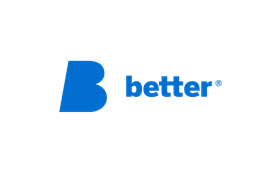The pandemic has driven a changed understanding of the value of consolidating healthcare information but there are obstacles to overcome if the NHS is to ensure a permament shift in the way the NHS uses data, a recent HSJ webinar heard

Ask Andrew Thompson whether the digital solutions the NHS introduced in response to the pandemic can be maintained and he expresses some doubt – and then suggests it may be the wrong question to focus on in any case.
Sponsored by
Mr Thompson, chief technology officer and acting digital health lead for Lancashire and South Cumbria integrated care system, says of more concern than maintaining specific solutions is maintaining the new approaches to data that have emerged since March 2020. He gives the example of the local shared care record.
“For us, this [sustainability challenge] needs to be more about the understanding of data and understanding the value of structured data. So, yes, a shared care record provides value [through] longitudinal, persistent records. But it will also provide value to population health management, and to patient facing applications.”
Mr Thompson was speaking at a recent HSJ webinar. Run in association with Better, it brought together a small panel to discuss how the NHS might ensure a permanent shift in the way it uses data.
All agreed that the pandemic has driven changed understanding of the value of consolidating healthcare information. David Seymour, Alliance executive director at Health Data Research UK, spoke of how researchers had used linked datasets to develop knowledge about covid and its impact on services.
“We’ve been working to accelerate access to datasets that bring together primary care, secondary care, testing data and so on,” he explained.
“And we’ve seen over 300 projects going live and accessing that data and that infrastructure. [Research] is enabled by data and scale. Which the pandemic has required, but also facilitated.”
He continued: “What the pandemic did bring was a really rapid convergence of research and care. Working together, effectively, at the pace needed to respond to a pandemic.”
It was a view shared by Tomaž Gornik, chief executive of Better. “I think it took a pandemic to change healthcare,” he said. “People have been used to buying applications and not thinking about the data. But this is now shifting.
“Of course, this move towards integrated care systems, to regions, started before the pandemic. But now it’s quite clear that, in order to have a complete picture of the health of a citizen, you need data from all sides.”
He said he was seeing increased numbers of applications built around this broader understanding of data: “Moving from the trusts into the region and encompassing the entire healthcare system, meaning primary care, GPs, community care as well as the acutes.”
“We’re very good at articulating the benefits of a siloed programme but not particularly great at articulating the bigger benefits of the total programme”
In Lancashire and South Cumbria, these sorts of developments are being supported by a digital memorandum of understanding between the ICS’ constituent organisations. “We’ve underpinned our digital strategy with the MOU,” explained Mr Thompson. “The MOU gives the principles of working together, at all levels within our organisations.”
Articulating the benefits
Even with new shared understanding, the panel agreed there are obstacles to ensuring a permanent shift in the NHS’ approach to data.
One may lie in reliably identifying and articulating the benefits of bringing data together. “It’s probably fair to reflect that we’re in a learning process on this,” reported Mr Thompson. “I think what we’re very good at doing, especially in the NHS, is delivering projects or programmes of work with a start and an end date and delivering the benefits against those specific projects.
“With our shared cared record, we did exercises throughout that programme to keep reiterating its benefits. So when it came to the sustainability challenge around financial costs at the end of the programme, it was a well trodden path around benefits realisation.
“What we’re not particularly good at doing, though, is bringing the benefits together across multiple projects. We’re very good at articulating the benefits of a siloed programme but not particularly great at articulating the bigger benefits of the total programme.”
There is also likely to be work to do on bolstering public understanding of how the NHS is and would like to use data. “One of the pieces of work we’ve got underway at the moment is around data use registers,” said Mr Seymour.
“So how do you have a single place, possibly via the Health Data Research Innovation Gateway that we’ve been developing, that people can really go and understand what their data is being used for, what are the different use cases and what’s the benefit?”
He argued that understanding the public benefit will be “crucial” to securing a permanent shift in the value ascribed to healthcare data. “NHS trust boards and others need to be taking that view that it’s not just about their individual organisation. There is a public benefit.
“But equally, there’s got to be a feedback loop – so how the use of that data [has helped] improve the performance and effectiveness of a hospital, a GP practice, an integrated care system. I think it’s really important that there’s a level of credit for people who have gone the extra yard to prepare their data or to share the data and make it available.”
For Mr Thompson, the time is now right to be thinking about these sorts of issues. “We’ve spent the last 12 months making sure that all the lights are kept on and that we’re able to run services,” he said. “I think we need to take a bit of time now to understand national and regional directions, refresh strategies, and move forward.”
An on demand recording of this webinar is available.
If you had previously registered for the event, click here. Simply log in and you’ll then be able to view the on demand recording.
If you haven’t already registered, click here. Once you’ve signed up, you’ll be sent details of how to access the on demand.


























